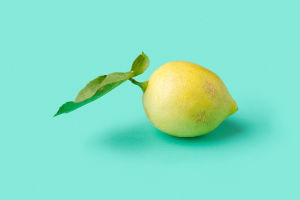Cereals are a staple food around the world, enjoyed by millions for their versatility, nutrition, and unique flavors. But not all cereals are created equal—there are many types, each with its own characteristics and uses.
Understanding how to classify cereals can help you choose the right one for your meals, enhance your cooking, and even appreciate their diverse contributions to global cuisine.
1. Classification Based on Grain Type
The most common way to classify cereals is by the type of grain they come from. Here are the primary cereal grains:
Wheat: One of the most widely consumed cereals, wheat is used in bread, pasta, and many other foods. Varieties like durum, spelt, and einkorn offer different textures and flavors.
Rice: A staple food in many cultures, rice comes in various forms such as white, brown, basmati, and jasmine. It can be classified further by grain size: short, medium, and long grain.
Corn (Maize): Corn is versatile and can be ground into flour, popped into popcorn, or eaten fresh as sweet corn. It is also used to make cornmeal, tortillas, and polenta.
Barley: Known for its chewy texture and nutty flavor, barley is often used in soups, stews, and as a malt. It’s a great source of fiber and has a low glycemic index.
Oats: Popular for breakfast cereals like oatmeal, oats are high in fiber and help lower cholesterol. They come in different forms like rolled oats, steel-cut oats, and oat bran.
Sorghum: A gluten-free cereal used in many African and Asian dishes, sorghum can be popped like popcorn or ground into flour for baking.
Millet: Small and round, millet is gluten-free and can be used in porridge, salads, or as a side dish. It's rich in magnesium and phosphorus.
Rye: Commonly used in bread, especially in Northern and Eastern Europe, rye offers a dense, hearty flavor and is rich in nutrients like fiber and manganese.
2. Classification Based on Processing Method
Another way to classify cereals is by the level of processing they undergo. Here's a breakdown:
Whole Grains: These cereals contain all parts of the grain kernel (bran, germ, and endosperm) and are minimally processed. Examples include whole wheat, brown rice, and oats.
Refined Grains: Refined cereals have had the bran and germ removed, which also takes away most of the fiber and nutrients. White rice, white flour, and cornmeal are examples of refined grains.
Enriched Grains: Refined grains that have had some nutrients added back, such as iron and B vitamins. Enriched wheat flour is a common example.
13 Tasty and Nutritious Breakfast Cereals | Consumer Reports
Video By Consumer Reports
3. Classification by Use in Cooking and Cuisine
Cereals can also be classified by their use in different types of cooking:
Breakfast Cereals: These include oats, wheat flakes, and puffed rice, often consumed with milk or yogurt. They can be hot (like oatmeal) or cold (like cornflakes).
Baking Cereals: Wheat, rye, and barley are commonly used in baking bread, cakes, and pastries.
Cooking Cereals: Grains like rice, millet, and quinoa are often used in cooking savory dishes like pilafs, casseroles, and side dishes.
4. Classification by Nutritional Content
Cereals can also be grouped by their nutritional content:
High-Protein Cereals: Quinoa, oats, and amaranth are rich in protein, making them ideal for vegetarian and vegan diets.
High-Fiber Cereals: Whole wheat, brown rice, barley, and rye are excellent sources of dietary fiber, supporting digestive health.
Gluten-Free Cereals: Rice, corn, millet, sorghum, and buckwheat are naturally gluten-free and suitable for those with gluten sensitivities or celiac disease.
Understanding how to classify cereals can transform how you approach your meals, helping you make healthier, more informed choices.Dear Lykkers,From wheat and rice to quinoa and sorghum, each cereal brings something unique to the table, making them an essential part of our diet and culture.


